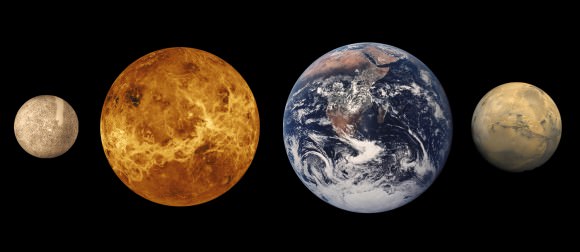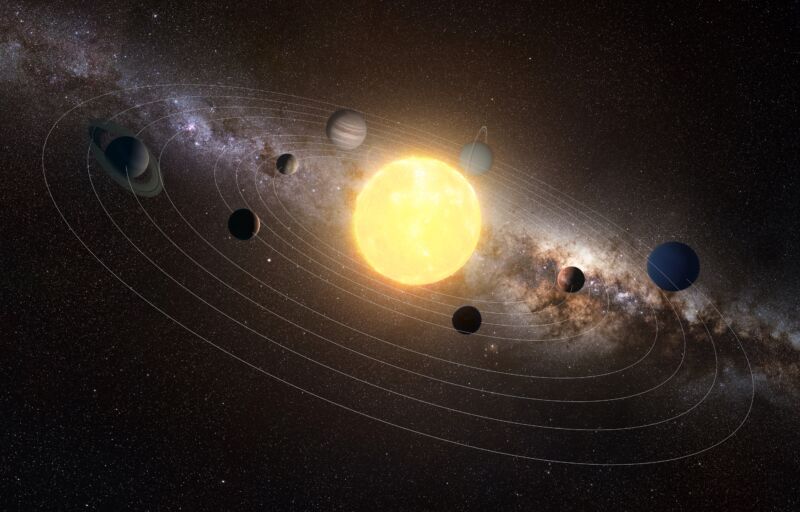Introduction: The Cosmic Tapestry Unveiled In Solar System Pictures
In The Vast Expanse Of The Cosmos, Our Solar System Stands As A Captivating Marvel, Offering A Celestial Spectacle Of Planets, Moons, And Other Cosmic Entities. This Pictorial Journey Unravels The Beauty And Complexity Of Our Solar System Through Captivating Images, Providing Insights Into The Celestial Bodies That Dance In The Cosmic Ballet.
A Glimpse Into The Solar System: An Overview
There is evidence that the formation of the Solar System began about 4.6 billion years ago with the gravitational collapse of a small part of a giant molecular cloud.[1] Most of the collapsing mass collected in the center, forming the Sun, while the rest flattened into a protoplanetary disk out of which the planets, moons, asteroids, and other small Solar System bodies formed.
This model, known as the nebular hypothesis, was first developed in the 18th century by Emanuel Swedenborg, Immanuel Kant, and Pierre-Simon Laplace. Its subsequent development has interwoven a variety of scientific disciplines including astronomy, chemistry, geology, physics, and planetary science. Since the dawn of the Space Age in the 1950s and the discovery of exoplanets in the 1990s, the model has been both challenged and refined to account for new observations.
The Solar System has evolved considerably since its initial formation. Many moons have formed from circling discs of gas and dust around their parent planets, while other moons are thought to have formed independently and later to have been captured by their planets. Still others, such as Earth’s Moon, may be the result of giant collisions. Collisions between bodies have occurred continually up to the present day and have been central to the evolution of the Solar System. Beyond Neptune, many sub-planet sized objects formed. Several thousand trans-Neptunian objects have been observed. Unlike the planets, these trans-Neptunian objects mostly move on eccentric orbits, inclined to the plane of the planets. The positions of the planets might have shifted due to gravitational interactions.[2] Planetary migration may have been responsible for much of the Solar System’s early evolution.
The Sun: Radiant Heart Of Our Solar System*
At The Center Of Our Cosmic Neighborhood Lies The Sun, A Colossal Ball Of Searing Plasma That Fuels Life On Earth. This Section Presents Striking Images Of The Sun, Showcasing Its Dynamic Surface And The Intricate Dance Of Solar Flares That Shape The Solar Wind.
The Eight Planets: Siblings In Orbit*
Our Solar System Hosts Eight Diverse Planets, Each With Its Unique Characteristics. From The Majestic Gas Giants Like Jupiter And Saturn To The Rocky Realms Of Mercury And Mars, This Subsection Provides Visual Insights Into The Planets That Orbit Our Sun.
Terrestrial Wonders: Close-Up Views Of Inner Planets
The Inner Planets:
The four inner planets are called terrestrial planets because their surfaces are solid (and, as the name implies, somewhat similar to Earth — although the term can be misleading because each of the four has vastly different environments). They’re made up mostly of heavy metals such as iron and nickel, and have either no moons or few moons. Below are brief descriptions of each of these planets based on this information from NASA.
Mercury: Mercury is the smallest planet in our Solar System and also the closest. It rotates slowly (59 Earth days) relative to the time it takes to rotate around the sun (88 days). The planet has no moons, but has a tenuous atmosphere (exosphere) containing oxygen, sodium, hydrogen, helium and potassium. The NASA MESSENGER (MErcury Surface, Space ENvironment, GEochemistry, and Ranging) spacecraft is currently orbiting the planet.

Venus: Venus was once considered a twin planet to Earth, until astronomers discovered its surface is at a lead-melting temperature of 900 degrees Fahrenheit (480 degrees Celsius). The planet is also a slow rotator, with a 243-day long Venusian day and an orbit around the sun at 225 days. Its atmosphere is thick and contains carbon dioxide and nitrogen. The planet has no rings or moons and is currently being visited by the European Space Agency’s Venus Express spacecraft.
Earth: Earth is the only planet with life as we know it, but astronomers have found some nearly Earth-sized planets outside of our solar system in what could be habitable regions of their respective stars. It contains an atmosphere of nitrogen and oxygen, and has one moon and no rings. Many spacecraft circle our planet to provide telecommunications, weather information and other services.
Mars: Mars is a planet under intense study because it shows signs of liquid water flowing on its surface in the ancient past. Today, however, its atmosphere is a wispy mix of carbon dioxide, nitrogen and argon. It has two tiny moons (Phobos and Deimos) and no rings. A Mars day is slightly longer than 24 Earth hours and it takes the planet about 687 Earth days to circle the Sun. There’s a small fleet of orbiters and rovers at Mars right now, including the large NASA Curiosity rover that landed in 2012.

Mercury: The Swift Messenger In Crisp Detail*
Exploring The Innermost Planet, Mercury, This Section Offers Close-Up Images Capturing The Rugged Terrain Of This Rocky World. From Cratered Surfaces To The Extremes Of Temperature, The Visuals Unveil The Intricacies Of Mercury’s Unique Landscape.
Venus: Enigmatic Beauty Shrouded In Clouds*
Venus, With Its Thick Atmosphere And Cloud-Covered Mystery, Is Unveiled Through Captivating Images. This Subsection Delves Into The Swirling Cloud Patterns And Volcanic Landscapes That Define Venus, Showcasing The Allure Of This Enigmatic Planet.
Earth: The Blue Jewel From Space*
Our Home Planet, Earth, Is A Tapestry Of Land, Water, And Life. This Section Presents Awe-Inspiring Images Of Earth From Space, Highlighting Continents, Oceans, And The Delicate Balance That Sustains Life On This Celestial Oasis.
Mars: The Red Planet’s Martian Landscape Revealed*
Journeying To Mars, This Subsection Showcases Panoramic Views Of The Red Planet’s Surface. From Rusty-Hued Deserts To The Majestic Valles Marineris, These Images Offer A Glimpse Into The Diverse Landscapes That Make Mars A Subject Of Fascination For Astronomers And Explorers.
Majestic Giants: Gas Giants Jupiter And Saturn
Jupiter: The King Of Planets In Vivid Detail*
Capturing The Majesty Of Jupiter, This Section Unveils Mesmerizing Images Of Its Swirling Cloud Bands, The Iconic Great Red Spot, And The Dance Of Its Galilean Moons. These Visuals Provide A Front-Row Seat To The Colossal Dynamics Of The Largest Planet In Our Solar System.
Saturn: Rings Of Elegance In Celestial Splendor*
Saturn’s Stunning Ring System Takes Center Stage In This Subsection. From Intricate Ring Patterns To The Hexagonal Storm At Its North Pole, The Images Offer A Closer Look At The Ethereal Beauty That Defines Saturn’s Celestial Grandeur.
Icy Outposts: Uranus And Neptune In The Outer Realm
Uranus: A Pale Blue Orb In The Cosmic Void*
Venturing Into The Outer Reaches, Uranus Emerges As A Pale Blue Orb In The Cosmic Void. This Section Showcases Images Capturing The Tilted Axis Of Uranus And The Enigmatic Features That Make It A Distinctive Member Of The Solar System Family.
Neptune: The Azure Giant In The Frigid Depths*
The Final Stop In Our Planetary Tour Takes Us To Neptune, The Outermost Gas Giant. Through Vivid Imagery, We Explore The Deep Blue Hues Of Neptune, The Great Dark Spot, And The Dynamic Storm Systems That Swirl Through Its Atmosphere.
Moonlit Marvels: Earth’s Moon And Beyond
Earth’s Moon: A Celestial Companion In Detail*
Our Closest Celestial Companion, Earth’s Moon, Comes Into Focus With Detailed Images Of Its Cratered Surface, Vast Plains, And The Far Side That Remained Hidden Until The Space Age. This Subsection Provides A Visual Journey Across The Lunar Landscape.
Moons Of The Outer Planets: A Menagerie Of Satellites*
Beyond Earth’s Moon, The Outer Planets Host A Diverse Array Of Moons. From The Volcanic Activity On Io To The Icy Plains Of Europa, These Images Showcase The Unique Characteristics Of The Satellites That Accompany The Gas Giants In Their Orbits.
Celestial Phenomena: Eclipses, Auroras, And More
Solar Eclipses: Cosmic Alignments In Spectacular Imagery*
Solar Eclipses, Moments Of Celestial Alignment, Are Captured In Breathtaking Detail In This Section. From The Diamond Ring Effect To The Mesmerizing Corona, These Images Showcase The Ephemeral Beauty Of Solar Eclipses As Seen From Various Vantage Points.
Auroras: Dances Of Light In The Polar Skies*
The Ethereal Beauty Of Auroras Graces Our Planet’s Polar Skies. This Subsection Presents Captivating Images Of These Celestial Light Shows, Exploring The Science Behind Auroras And The Visual Splendor They Create In Earth’s Atmosphere.
Probing The Depths: Robotic Explorers And Spacecraft Imagery
Robotic Explorers: Visual Insights From Space Probes*
Space Probes And Robotic Explorers Have Ventured Into The Depths Of Our Solar System, Providing Invaluable Imagery. This Section Showcases Visuals From Missions Like Voyager, Cassini, And New Horizons, Offering A Firsthand Look At The Vistas They Encountered.
Hubble Space Telescope: A Window To The Cosmos*
The Hubble Space Telescope Has Been A Key Player In Capturing Stunning Images Of Our Solar System And Beyond. This Subsection Highlights Iconic Hubble Imagery, From Detailed Views Of Planets To Mesmerizing Deep-Space Phenomena.
Beyond The Solar System: Exoplanets And Cosmic Wonders
Exoplanets: Exploring Planetary Systems Beyond Ours*
The Search For Exoplanets Has Expanded Our Understanding Of Planetary Systems. This Section Presents Images Of Distant Exoplanets, Showcasing The Variety Of Worlds That Exist Beyond Our Solar System.
Nebulae, Galaxies, And Beyond: Deep-Space Marvels*
Delving Into The Cosmos Beyond Our Solar System, This Subsection Unveils Images Of Nebulae, Galaxies, And Other Deep-Space Marvels. From The Pillars Of Creation To The Hubble Deep Field, These Visuals Showcase The Breathtaking Vastness Of The Universe.
Conclusion: A Cosmic Odyssey Through Solar System Imagery
In Conclusion, Our Solar System, Captured Through Mesmerizing Imagery, Reveals A Tapestry Of Celestial Wonders. From The Fiery Brilliance Of The Sun To The Icy Realms Of The Outer Planets, Each Image Invites Us On A Cosmic Odyssey, Fostering A Deeper Appreciation For The Intricate Beauty And Vastness Of The Cosmos. As Technology Advances And New Missions Explore Uncharted Territories, The Visual Narrative Of Our Solar System Continues To Evolve, Offering Fresh Perspectives And Fueling The Eternal Human Curiosity That Reaches For The Stars.
